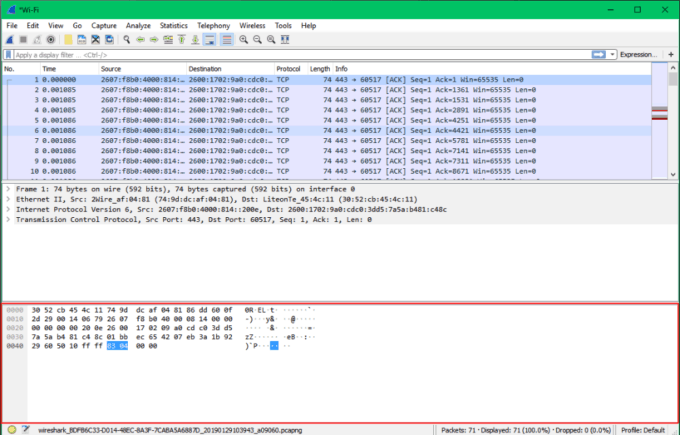

- #Wireshark mac destination install
- #Wireshark mac destination software
- #Wireshark mac destination windows
Step 1: Examine the captured data on the same LAN. This analysis should help to clarify how packet headers are used to transport data to the destination. You will also look inside the captured PDUs for specific information.

In this part, you will ping between two hosts in the Mininet and capture ICMP requests and replies in Wireshark. 4e:b8:9c:5a:aa:50 Part 2: Capture and Analyze ICMP Data in Wireshark TX errors 0 dropped 0 overruns 0 carrier 0 collisions 0 Host-interface IP Address MAC Address H1-eth0 10.0.0.11 Answers may vary. The IPv4 address and MAC address are highlighted below for reference. At the prompt on Node: H1, enter ifconfig to verify the IPv4 address and record the MAC address. Each host will have its own separate configuration for the network including unique IP and MAC addresses.
#Wireshark mac destination windows
This will open separate windows for these hosts. At the mininet prompt, start terminal windows on hosts H1 and H2. Step 3: Record IP and MAC addresses for H1 and H2.Ī. When prompted, enter cyberops as the password.

Open a terminal emulator to start mininet and enter the following command at the prompt.
#Wireshark mac destination install
Password: cyberops Step 2: Run the Python script to install the Mininet Topology. Start and log into your CyberOps Workstation that you have installed in a previous lab using the following credentials: Step 1: Verify your PC’s interface addresses. You will then record the IP and MAC addresses for H1 and H2. In this part, you will use a Python script to set up the Mininet Topology inside the CyberOps VM.
#Wireshark mac destination software
Wireshark is a software protocol analyzer, or “packet sniffer” application, used for network troubleshooting, analysis, software and protocol development, and education. For example, in this lab you will use the ping command between two hosts in the Mininet Topology and capture those pings with Wireshark. This will allow you to simulate a variety of network protocols and services without having to configure a physical network of devices. You will then have access to four hosts, a switch, and a router inside your one VM. The CyberOps VM includes a Python script that, when you run it, will set up and configure the devices shown in the figure above.


 0 kommentar(er)
0 kommentar(er)
